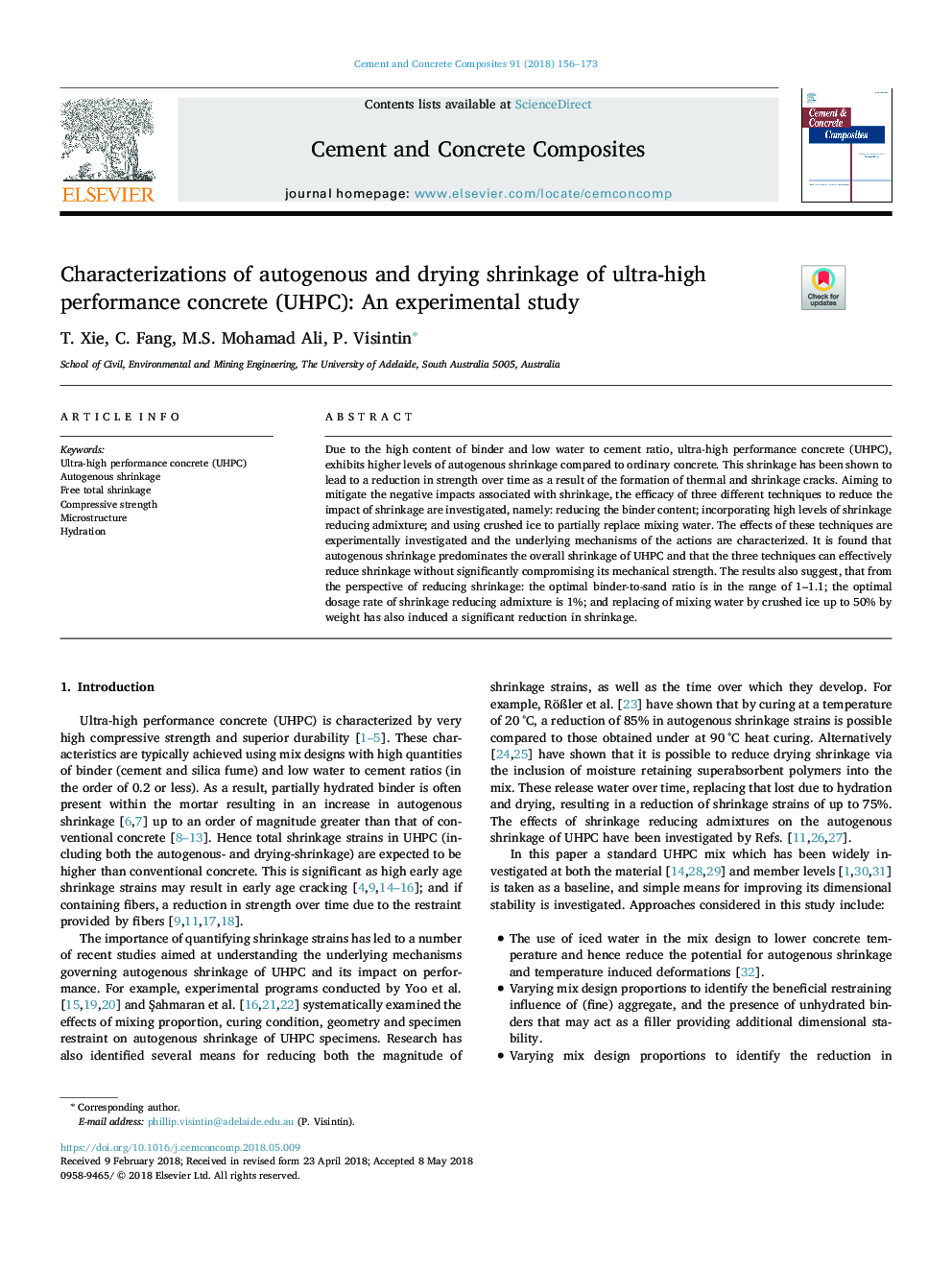| Article ID | Journal | Published Year | Pages | File Type |
|---|---|---|---|---|
| 7883680 | Cement and Concrete Composites | 2018 | 18 Pages |
Abstract
Due to the high content of binder and low water to cement ratio, ultra-high performance concrete (UHPC), exhibits higher levels of autogenous shrinkage compared to ordinary concrete. This shrinkage has been shown to lead to a reduction in strength over time as a result of the formation of thermal and shrinkage cracks. Aiming to mitigate the negative impacts associated with shrinkage, the efficacy of three different techniques to reduce the impact of shrinkage are investigated, namely: reducing the binder content; incorporating high levels of shrinkage reducing admixture; and using crushed ice to partially replace mixing water. The effects of these techniques are experimentally investigated and the underlying mechanisms of the actions are characterized. It is found that autogenous shrinkage predominates the overall shrinkage of UHPC and that the three techniques can effectively reduce shrinkage without significantly compromising its mechanical strength. The results also suggest, that from the perspective of reducing shrinkage: the optimal binder-to-sand ratio is in the range of 1-1.1; the optimal dosage rate of shrinkage reducing admixture is 1%; and replacing of mixing water by crushed ice up to 50% by weight has also induced a significant reduction in shrinkage.
Keywords
Related Topics
Physical Sciences and Engineering
Engineering
Industrial and Manufacturing Engineering
Authors
T. Xie, C. Fang, M.S. Mohamad Ali, P. Visintin,
